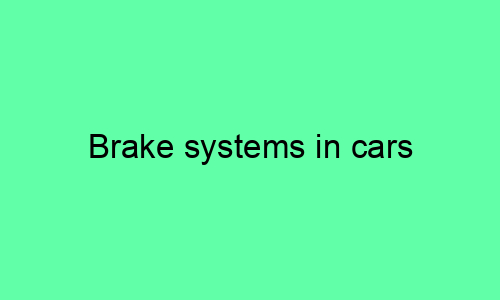Brake Systems in Cars
Introduction
Brakes are one of the most important safety features in a car. They allow you to slow down or stop the car, and they help to keep you safe in the event of an accident. There are two main types of brake systems in cars: hydraulic brakes and air brakes.
Hydraulic Brakes
Hydraulic brakes are the most common type of brake system in cars. They use a fluid to transmit force from the brake pedal to the brake pads. When you press on the brake pedal, a piston in the master cylinder pushes fluid through brake lines to the brake calipers. The brake calipers then use the fluid to push the brake pads against the brake rotors, which slows down or stops the car.
Hydraulic brakes are very effective, but they can be expensive to maintain. They also require regular fluid changes and bleeding.
Air Brakes
Air brakes are used on heavy-duty vehicles, such as trucks and buses. They use compressed air to transmit force from the brake pedal to the brake pads. When you press on the brake pedal, a compressor pumps air into a reservoir. The air then flows through brake lines to the brake actuators. The brake actuators then use the air to push the brake pads against the brake rotors, which slows down or stops the car.
Air brakes are very powerful, but they can be slow to respond. They also require regular maintenance, including air filter changes and compressor lubrication.
Which Type of Brake System is Better?
There is no clear answer to the question of which type of brake system is better. Hydraulic brakes are more common and less expensive to maintain, but air brakes are more powerful and can be used on heavier vehicles.
Ultimately, the best type of brake system for your car will depend on your individual needs and preferences.
How to Maintain Your Brake System
Regardless of the type of brake system you have, it is important to maintain it regularly. This includes:
- Checking the brake fluid level and condition
- Inspecting the brake pads and rotors
- Bleeding the brakes
- Lubricating the brake calipers and other moving parts
By following these simple steps, you can help to ensure that your brake system is always in good working condition.
Conclusion
Brakes are an essential safety feature in a car. By understanding the different types of brake systems and how to maintain them, you can help to keep yourself and your passengers safe on the road.






